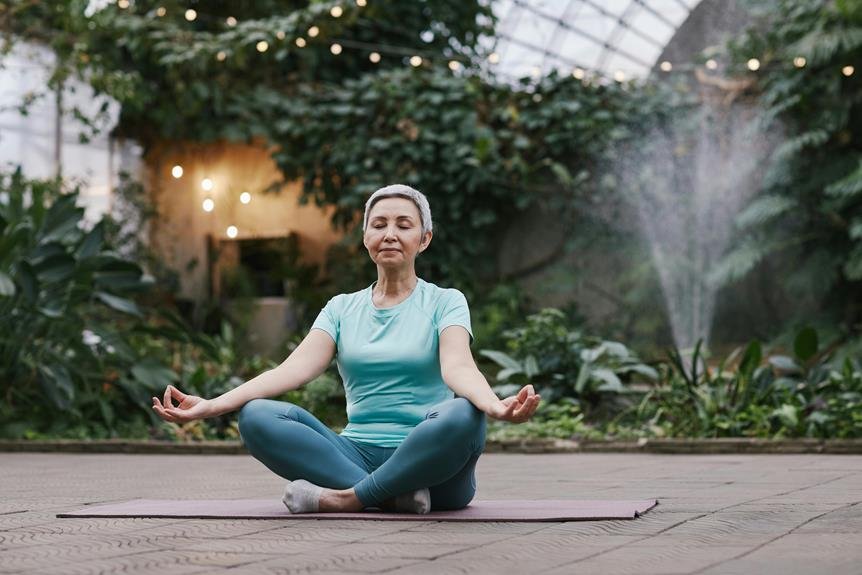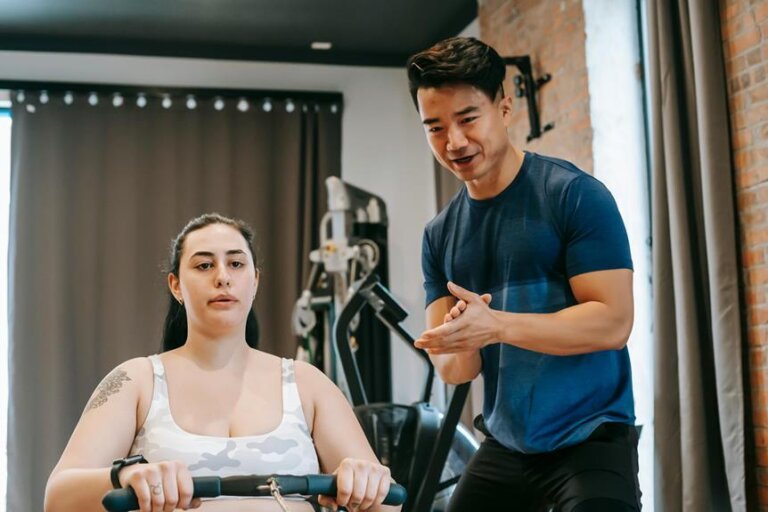Incorporating Mindfulness Into Your Workout Regimen
Striking a balance between the intensity of physical exertion and the tranquility of mindfulness may seem like a daunting task at first, but it holds the key to unlocking a whole new level of fitness potential. By blending the power of focused awareness with your exercise routine, you can tap into a realm where mind and body harmonize in perfect sync, elevating your performance and overall well-being.
But how exactly can you achieve this synergy? Stay tuned as we delve into practical strategies and insights that will revolutionize your workout experience.
Benefits of Mindful Workouts
Engaging in mindful workouts can significantly enhance your overall well-being and fitness progress. By focusing on the present moment during exercise, you can improve your mind-body connection, leading to a more effective workout session. When you're fully present in your movements, you're better able to listen to your body's needs and avoid injuries. This heightened awareness also allows you to push yourself to new limits, breaking through mental barriers that may have been holding you back.
Moreover, practicing mindfulness during workouts can reduce stress and anxiety levels. Instead of letting your mind wander to external stressors, you can use this time to center yourself and find inner peace. This mental clarity can improve your mood and leave you feeling more energized and positive after your workout.
In addition, being present in the moment can help you appreciate the physical sensations of exercise. You can savor the feeling of your muscles working, the sweat on your skin, and the rhythm of your breath. This sensory experience can make your workouts more enjoyable and fulfilling, motivating you to stay consistent with your fitness routine.
Mind-Body Connection Enhancement
Enhancing the connection between your mind and body is key to maximizing the benefits of mindful workouts. When you focus on this connection, you can experience a deeper level of awareness during your exercise routine. Start by paying attention to how your body feels as you move, noticing the sensations, tension, and areas of strength. As you tune into these physical cues, your mind becomes more present, allowing you to fully engage with each movement.
To enhance the mind-body connection further, practice deep breathing throughout your workout. Breathing deeply helps to center your mind and connect it with the physical exertion of your body. This synchronization can improve your performance, prevent injuries, and promote a sense of overall well-being. Additionally, maintaining a positive attitude and staying present in the moment will help you fully immerse yourself in the workout experience.
Techniques for Mindful Exercise
To cultivate mindfulness during your workouts, focus on incorporating specific techniques that promote awareness of your body and movements. Start by paying attention to your breath. Notice how it flows in and out as you move, helping you stay grounded in the present moment.
Another technique is body scanning. Begin at your feet and slowly work your way up, bringing attention to each body part. This helps you tune in to any areas of tension or discomfort, allowing you to adjust your form and prevent injuries.
Mindful movement is crucial. Concentrate on the quality of your movements rather than the quantity. Slow down and feel each muscle engaging as you perform exercises, enhancing both your mind-body connection and the effectiveness of your workout.
Lastly, practice gratitude. Express appreciation for what your body can do rather than focusing on its limitations. This positive mindset can boost motivation and overall workout satisfaction. By incorporating these techniques, you can elevate your workout experience and reap the benefits of mindful exercise.
Mindfulness for Improved Performance
To enhance your workout performance, incorporate mindfulness techniques that promote focus and awareness of body movements. By practicing mindfulness during your workouts, you can improve your overall performance and achieve better results. Mindfulness helps you stay present in the moment, allowing you to fully engage with each exercise and movement. This heightened awareness enables you to make necessary adjustments to your form, posture, and breathing, leading to more effective and efficient workouts.
When you're mindful during your workouts, you can better connect with your body and understand its signals. This awareness can help prevent injuries by allowing you to recognize when you're pushing yourself too hard or using improper techniques. Mindfulness also aids in enhancing your mind-body connection, which can lead to increased strength, flexibility, and coordination.
Incorporating mindfulness into your workout routine can also boost your mental focus and concentration. By staying present and focused on the task at hand, you can push through challenges and plateaus more effectively. Overall, mindfulness is a powerful tool for improving your workout performance and achieving your fitness goals.
Tips for Mindful Fitness Integration
For effective mindful fitness integration, focus on incorporating small mindfulness practices into each aspect of your workout routine. Begin by setting an intention before starting your workout. This can be a specific goal for the session or simply a reminder to stay present and focused.
During warm-up exercises, pay attention to your body's movements, breathing, and any sensations that arise. This will help prepare your mind and body for the main workout ahead.
As you move into the main part of your workout, practice mindfulness by staying fully engaged in each exercise. Focus on your form, breathing rhythm, and muscle engagement. Be aware of any distractions that arise and gently bring your attention back to the present moment.
Mindful fitness integration also involves listening to your body's cues. If you feel pain or discomfort, adjust your workout accordingly to prevent injuries.
Frequently Asked Questions
Can Mindfulness Help With Reducing Muscle Soreness and Recovery Time After Workouts?
Yes, mindfulness can help reduce muscle soreness and improve recovery time after workouts. By being present during exercise, you can better tune into your body's needs, release tension, and promote overall relaxation for quicker recovery.
How Can Mindfulness Be Incorporated Into Group Fitness Classes or Team Sports?
To incorporate mindfulness into group fitness or team sports, focus on breathing techniques during warm-ups, encouraging teammates to stay present during drills, and fostering a positive, supportive environment. Mindfulness can enhance performance and team cohesion.
Are There Specific Mindfulness Practices That Are More Effective for High-Intensity Workouts Versus Low-Intensity Workouts?
For high-intensity workouts, focusing on controlled breathing can help manage stress and boost performance. Low-intensity activities benefit from body scan techniques, enhancing awareness of muscle engagement and relaxation. Tailoring mindfulness practices to workout intensity can optimize benefits.
Can Mindfulness Improve Flexibility and Mobility in Addition to Strength and Endurance?
Mindfulness can enhance flexibility and mobility along with strength and endurance. By being present in your movements, you improve body awareness, reduce tension, and enhance overall performance. Consistent practice can lead to greater physical adaptability.
How Can Mindfulness Be Used to Overcome Mental Barriers or Plateaus in Fitness Progress?
To overcome mental barriers or plateaus in fitness progress, focus on the present moment during workouts. Acknowledge thoughts without judgment and redirect your attention to the task at hand. Stay aware of your body and breath to push through challenges.
Conclusion
Incorporating mindfulness into your workout routine can greatly enhance your overall fitness experience. By focusing on the present moment and being fully engaged in your exercise, you can improve your mind-body connection, performance, and overall well-being.
Remember to practice mindfulness techniques, stay present during your workouts, and listen to your body's signals. With a mindful approach to fitness, you can achieve greater results and enjoy a more fulfilling exercise regimen.






